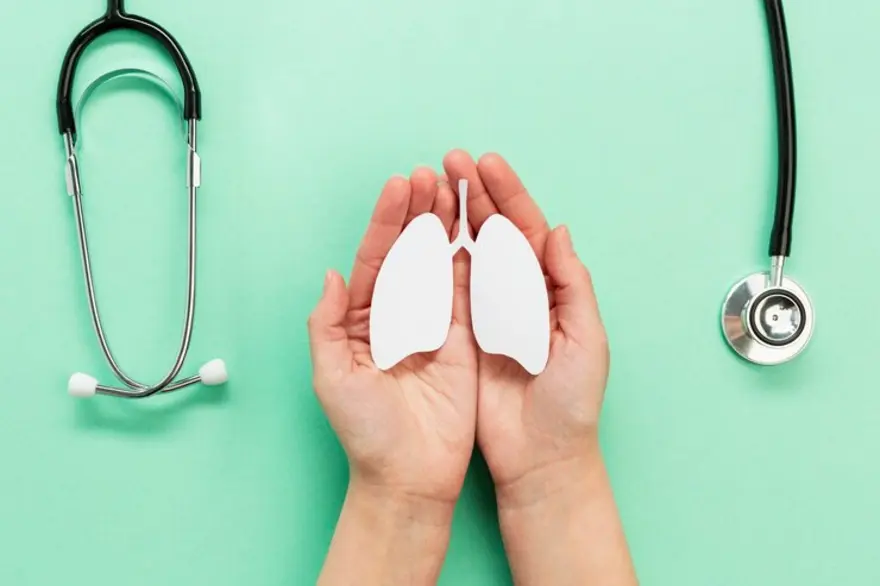Testosterone levels
Testosterone: Know Levels in Men and Testosterone Hormone in Female
Introduction You may have heard about testosterone in different contexts, but there’s much more to it than casual conversations. It is a sex hormone that plays a vital role in males and the health and well-being of a person. You may be surprised to know that women also need this hormone for multiple reasons. Let’s find out, in this article, what testosterone is and how it affects your health. What is Testosterone? Testosterone is a sex hormone primarily produced by the male testis and female ovaries, found in humans and animals. In men, it plays a crucial part in developing the reproductive organs during puberty. It also regulates muscle mass, red blood cell production in the male body, and fat distribution. In females, the ovaries and adrenal glands produce testosterone in much lesser amounts. It combines with the female sex hormone estrogen to assist the growth, maintenance, and repair of female reproductive tissues and bone mass. It also influences a woman’s energy levels, moods, and libido. How Testosterone Affects Male Health When a male child reaches adolescence, testosterone production in their bodies rises and continues till the age of 30, after which it starts to diminish. During this period, it significantly contributes to the development of the body. The testosterone levels in the body can also influence a man’s mood. The roles played by testosterone in men include: The development of male reproductive organs. The gradual voice change during adolescence. Growth of facial and pubic hairs. In later life, it might also lead to male pattern balding. The growth and strength of muscles and bones. Production of male reproductive gametes or sperms. Regulates libido. Sperm production. Lower Testosterone Levels in Men If testosterone levels are too low, it might affect the health adversely. You would notice some symptoms due to this, and your doctor might ask you to go for a test to check the testosterone levels in your bloodstream. The average testosterone levels in an adult male's bloodstream range from 249 to 836 nanograms per deciliter (ng/dL). If the testosterone levels are lower than the normal limits or close to the lower limit, then you would require to determine the leading cause behind it. Some causes can include the following. The pituitary gland malfunctions, which sends signals to the testicles to produce the hormone. Due to a chronic health condition, such as kidney disease, alcoholism, AIDS, or liver cirrhosis. Treatments like chemotherapy or radiation can also affect the levels of testosterone. Adult men with low levels of testosterone may experience the following symptoms: Declining sex drive. Low energy levels. Drastic weight gain. Depression. Sudden mood swings. Weak and thin bones. Lessening of hair on the body. Low self-confidence. However, adolescents experiencing symptoms of low testosterone levels could be a sign of delayed puberty. Some symptoms may include less facial or pubic hair, delayed voice breaking/changing, and underdeveloped reproductive parts. Higher Testosterone Levels in Men Higher levels of testosterone mean increased activity of the main functions regulated by it. However, if you wonder whether it means increased strength or higher sex drive, it doesn’t quite work that way. Although a high testosterone level in men may lead to more muscle mass, it has many side effects. When the levels of the male hormone in the body are abnormally high, it gives rise to the following symptoms, Lower sperm count. Damage in the heart muscle. Enlarged prostate. Insomnia. Increase in muscle mass. Frequent mood swings. Overgrowth of body hair. Acne. Stunted growth. One of the major causes of high testosterone levels can be attributed to Testosterone Replacement Therapy (TRT). It is a natural testosterone booster treatment to increase levels, usually suggested to those who experience deficient levels. This treatment is given only to people whose bodies do not produce adequate amounts, resulting in major developmental issues. You can adopt specific lifestyle changes to maintain a healthy testosterone hormone balance in case of minor fluctuations. Testosterone in Women It’s no surprise that women require testosterone for the proper functioning of their bodies. Women's ovaries and adrenal glands also produce testosterone in smaller quantities than men. A proper balance between the female sex hormone estrogen and testosterone is essential for a woman's physical and emotional well-being. Testosterone plays the following role in women, maintaining overall health. It makes bones strong and healthy. It improves the brain's cognitive functions. It regulates sex drive. It maintains and restores reproductive tissues. It supports menstrual health and fertility. It supports breast health. In a healthy adult female, testosterone levels remain between 15 and 70 nanograms per deciliter (ng/dL). If lower than the normal levels, the following symptoms can be noticed: Fertility issues. Lower sex drive. Changes in the breast tissues. Irregular menstrual cycles. Weaker bones. Whereas, if the levels are higher than normal, then you will notice the following signs: Severe acne. Abnormalities in blood sugar levels. Excess hair on the face and also other parts of the body. Polycystic ovarian syndrome or PCOS. Infertility. Obesity. Decreased menstruation. Conclusion Testosterone is an essential hormone, even if incorrectly blamed for all unpleasant, unrefined aggressive, macho, angsty behaviourism. The term commonly thrown in when describing ultra, aggressive dominating behaviour is yet not fully understood. Maintaining proper levels of testosterone in both men and women is crucial. Otherwise, it might lead to damage to both the mind and body. You can check the testosterone levels in your body through a testosterone profile test. However, remember that a single test report reflecting a high or low testosterone level may not indicate anything too severe. You will also have to consider the symptoms to be sure. Always consult a medical expert or doctor about mild to severe symptoms.
Low Testosterone Symptoms: Know Levels, Causes and Treatment
What is testosterone? Testosterone is the primary male sex hormone produced by the testes. It is responsible for developing male characteristic features like facial and body hair, muscular strength, deep voice, etc. Moreover, testosterone is needed to produce sperm. Although testosterone is a male sex hormone, it is produced in small amounts in women’s ovaries. It combines with oestrogen to help in bone mass and maintenance and growth of reproductive tissues. What is low testosterone? The average testosterone levels vary depending on factors like protein levels, thyroid functioning, etc. However, the AUA (American Urological Association) has fixed 246-836 ng/dL as the normal level for a man. Normal testosterone levels in men are different from that in women. The average testosterone levels for women vary from 15-70 ng/dL. Testosterone levels below this are said to be low levels of testosterone. Testosterone levels are at their peak in adolescents and young adults. Then they start declining at 1% every year after 30 years of age. This is natural. However, too low levels of testosterone can cause undesired effects. So, it is better to test your testosterone levels if you suspect deficiency and decide if you need treatment for low testosterone. How do you test testosterone levels? To determine if you have testosterone deficiency, your doctor will ask you to measure the hormone levels in your blood. The hormone levels are usually high in the morning. So, it is generally recommended to take the test before 10 am for young adults and before 2 pm for men of age 45 and above. You should mention your medications because some may affect hormone levels. Your doctor will ask you to stop taking them before testing. It is a simple test, and there are no risks involved. Measuring total testosterone is usually sufficient for diagnosis. However, in cases of mild abnormalities total testosterone and bioavailable/ free testosterone should be measured What are the causes of low testosterone? Causes of low testosterone in men include: Ageing Injury to the testicles Infection in testes Trauma leading to head injury Medications like corticosteroids and pain meds like opioid Obesity and high body fat Extreme weight loss Overconsumption of alcohol Drug abuse Treatments for cancer, including radiation and chemotherapy Emotional stress Chronic illnesses including liver cirrhosis, hypothyroidism, uncontrolled type 2 diabetes mellitus, and kidney failure Pituitary gland diseases like tumour and dysfunction Genetic reasons like Klinefelter syndrome Sleep apnea What are the symptoms of low testosterone in men 1. Low libido Sexual desire will decrease drastically if the testosterone levels are low because testosterone plays a significant role in libido. 2. Erectile dysfunction Testosterone commands your brain to produce nitric oxide that stimulates a few reactions necessary for erection. When the hormone levels are low, the risk of difficulty getting and maintaining an erection is high. 3. Decrease in muscle mass Testosterone levels and muscle mass are directly proportional. The more the level of testosterone, the more muscle mass. Hence, when testosterone levels decrease, the muscle mass also decreases. 4.Tiredness If you feel extremely exhausted and cannot find the energy to perform your everyday tasks, it could be one of the symptoms of low testosterone. 5. Hair loss Low testosterone not only affects the hair on top of your head but has an impact on facial and chest hair too. 6. Heavy sweating Feeling hot, sweating excessively, sweating suddenly while sleeping, and redness of the skin are symptoms of decreased testosterone levels. 7. Changes in mood Low testosterone levels can cause anxiety, anger, irritability, hostility, and mood swings. It also increases stress. 8. Small penis Testosterone plays a vital role in the development of the penis, and it may make your scrotum look softer than usual. What are the symptoms of low testosterone in women? Decreased sex drive Mood swings Weight gain Infertility Sleep issues and Loss of memory How can you increase testosterone levels naturally? 1. Exercising and weight lifting Studies have proved that exercising regularly can boost testosterone levels. Weight lifting, resistance training, and high-intensity interval training are the best exercises that work to a large extent. 2. Proper diet Include more protein in your diet. It helps in weight loss which is essential for increasing testosterone. Carbohydrates are also needed for better resistance training. A balanced diet with protein, carbs, and healthy fat will help to optimise hormone levels. 3. Good sleep A study shows that people who slept for just 5 hours a day had low testosterone levels compared to those who slept for 7 or more hours a day. Experts have concluded that there is a 15% increase in testosterone production for every additional hour after 5 hours of sleep. 4. Onions, ginger, and garlic Include onions, ginger, and garlic in your recipes. They contain flavonoids that boost the production of testosterone. Add spice to your foods to increase testosterone. 5. No stress Get rid of stress because stress increases the production of cortisol, which decreases testosterone. What are the treatment options for low testosterone? Testosterone therapy is the best testosterone treatment. Testosterone replacement therapy can be in one of the following ways. Gel - Topical gels rubbed on thighs, shoulders, and upper arms increase testosterone levels. Skin patch - A patch applied on the skin in the evening is very effective. The patch has to be changed after 24 hours. Injections - Testosterone levels rise instantly to very high levels after the injection, but the sudden rise may cause mood changes. Oral medications - It may be in the form of capsules that can be swallowed or tablets that are attached to the side of your inner cheek. However, testosterone treatment may cause undesired side effects like sleep apnea, shrinking of testicles, decrease in sperm count, and acne. It should be taken only if the doctors recommend it. Taking a testosterone profile test is essential to decide if you need testosterone therapy or not. So, if you are experiencing the symptoms of low testosterone, take a testosterone profile test without delay.
 Home Visit
Home Visit Upload
Upload
















 WhatsApp
WhatsApp